Follistatin-Like-1 (FSTL1) Is a Fibroblast-Derived Growth Factor That Contributes to Progression of Chronic Kidney Disease
- PMID: 34502419
- PMCID: PMC8431028
- DOI: 10.3390/ijms22179513
Follistatin-Like-1 (FSTL1) Is a Fibroblast-Derived Growth Factor That Contributes to Progression of Chronic Kidney Disease
Abstract
Our understanding of the mechanisms responsible for the progression of chronic kidney disease (CKD) is incomplete. Microarray analysis of kidneys at 4 and 7 weeks of age in Col4a3-/- mice, a model of progressive nephropathy characterized by proteinuria, interstitial fibrosis, and inflammation, revealed that Follistatin-like-1 (Fstl1) was one of only four genes significantly overexpressed at 4 weeks of age. mRNA levels for the Fstl1 receptors, Tlr4 and Dip2a, increased in both Col4a-/- mice and mice subjected to unilateral ureteral obstruction (UUO). RNAscope® (Advanced Cell Diagnostics, Newark CA, USA) localized Fstl1 to interstitial cells, and in silico analysis of single cell transcriptomic data from human kidneys showed Fstl1 confined to interstitial fibroblasts/myofibroblasts. In vitro, FSTL1 activated AP1 and NFκB, increased collagen I (COL1A1) and interleukin-6 (IL6) expression, and induced apoptosis in cultured kidney cells. FSTL1 expression in the NEPTUNE cohort of humans with focal segmental glomerulosclerosis (FSGS), membranous nephropathy (MN), and IgA nephropathy (IgAN) was positively associated with age, eGFR, and proteinuria by multiple linear regression, as well as with interstitial fibrosis and tubular atrophy. Clinical disease progression, defined as dialysis or a 40 percent reduction in eGFR, was greater in patients with high baseline FSTL1 mRNA levels. FSTL1 is a fibroblast-derived cytokine linked to the progression of experimental and clinical CKD.
Keywords: FSTL1; apoptosis; cytokines; fibrosis; inflammation; kidney; nephrotic syndrome.
Conflict of interest statement
The authors declare no conflict of interest. The funders had no role in the design of the study; in the collection, analyses, or interpretation of data; in the writing of the manuscript, or in the decision to publish the results.
Figures
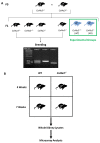





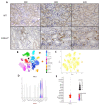



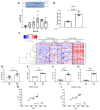

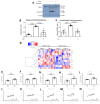










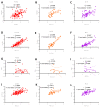


Similar articles
-
Renal tubular epithelial-derived follistatin-like 1 protects against UUO-induced renal fibrosis in mice via inhibiting NF-κB-mediated epithelial inflammation.Theranostics. 2025 Jan 20;15(6):2413-2427. doi: 10.7150/thno.100969. eCollection 2025. Theranostics. 2025. PMID: 39990230 Free PMC article.
-
FSTL1 Secreted by Activated Fibroblasts Promotes Hepatocellular Carcinoma Metastasis and Stemness.Cancer Res. 2021 Nov 15;81(22):5692-5705. doi: 10.1158/0008-5472.CAN-20-4226. Epub 2021 Sep 22. Cancer Res. 2021. PMID: 34551961
-
Cardiac myocyte-derived follistatin-like 1 prevents renal injury in a subtotal nephrectomy model.J Am Soc Nephrol. 2015 Mar;26(3):636-46. doi: 10.1681/ASN.2014020210. Epub 2014 Jul 28. J Am Soc Nephrol. 2015. PMID: 25071081 Free PMC article.
-
Follistatin-like 1 in development and human diseases.Cell Mol Life Sci. 2018 Jul;75(13):2339-2354. doi: 10.1007/s00018-018-2805-0. Epub 2018 Mar 29. Cell Mol Life Sci. 2018. PMID: 29594389 Free PMC article. Review.
-
Follistatin-like protein 1: Implications for renal disease progression.J Pharmacol Exp Ther. 2025 May;392(5):103564. doi: 10.1016/j.jpet.2025.103564. Epub 2025 Mar 26. J Pharmacol Exp Ther. 2025. PMID: 40239460 Review.
Cited by
-
Roles of follistatin-like protein 3 in human non-tumor pathophysiologies and cancers.Front Cell Dev Biol. 2022 Oct 17;10:953551. doi: 10.3389/fcell.2022.953551. eCollection 2022. Front Cell Dev Biol. 2022. PMID: 36325361 Free PMC article. Review.
-
Renal tubular epithelial-derived follistatin-like 1 protects against UUO-induced renal fibrosis in mice via inhibiting NF-κB-mediated epithelial inflammation.Theranostics. 2025 Jan 20;15(6):2413-2427. doi: 10.7150/thno.100969. eCollection 2025. Theranostics. 2025. PMID: 39990230 Free PMC article.
-
FSTL1 aggravates high glucose-induced oxidative stress and transdifferentiation in HK-2 cells.Sci Rep. 2025 Jan 2;15(1):434. doi: 10.1038/s41598-024-84462-5. Sci Rep. 2025. PMID: 39748077 Free PMC article.
-
Reconstructing growth and dynamic trajectories from single-cell transcriptomics data.Nat Mach Intell. 2024;6(1):25-39. doi: 10.1038/s42256-023-00763-w. Epub 2023 Nov 30. Nat Mach Intell. 2024. PMID: 38274364 Free PMC article.
-
BMSCs alleviate liver cirrhosis by regulating Fstl1/Wnt/β-Catenin signaling pathway.Heliyon. 2023 Oct 20;9(11):e21010. doi: 10.1016/j.heliyon.2023.e21010. eCollection 2023 Nov. Heliyon. 2023. PMID: 37920508 Free PMC article.
References
-
- Escobar C., Aranda U., Palacios B., Capel M., Sicras A., Sicras A., Hormigo A., Alcázar R., Manito N., Botana M. Epidemiology, clinical profile, management, and two-year risk complications among patients with chronic kidney disease in Spain. Nefrologia. 2021 doi: 10.1016/j.nefro.2021.03.006. in press. - DOI - PubMed
-
- Bae E.H., Fang F., Williams V.R., Konvalinka A., Zhou X., Patel V.B., Song X., John R., Oudit G.Y., Pei Y., et al. Murine recombinant angiotensin-converting enzyme 2 attenuates kidney injury in experimental Alport syndrome. Kidney Int. 2017;91:1347–1361. doi: 10.1016/j.kint.2016.12.022. - DOI - PubMed
MeSH terms
Substances
Grants and funding
LinkOut - more resources
Full Text Sources
Medical
Molecular Biology Databases
Research Materials
Miscellaneous

